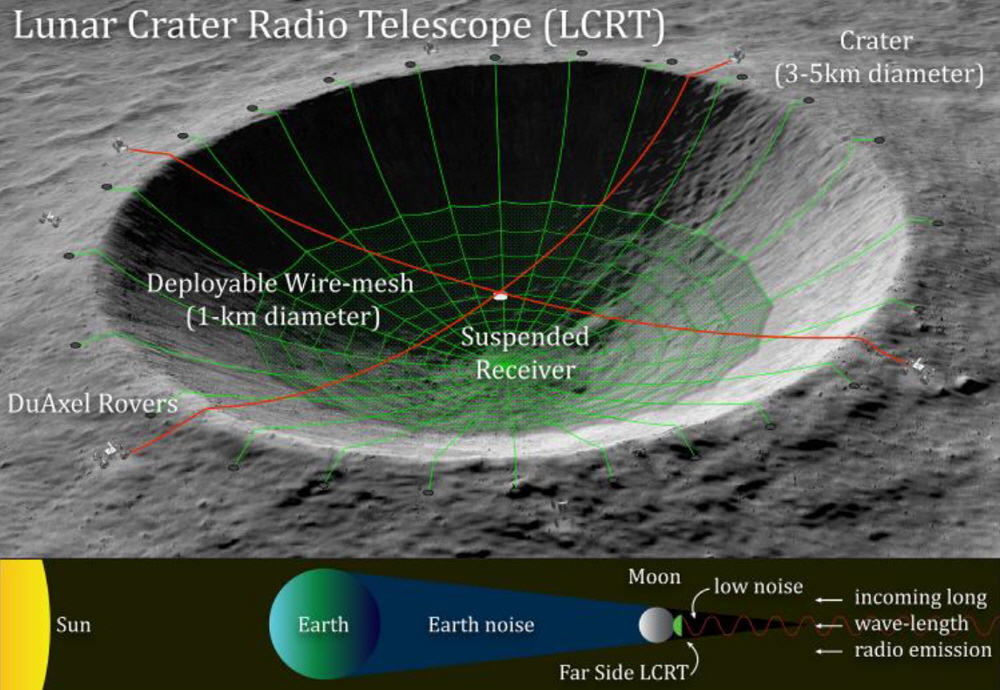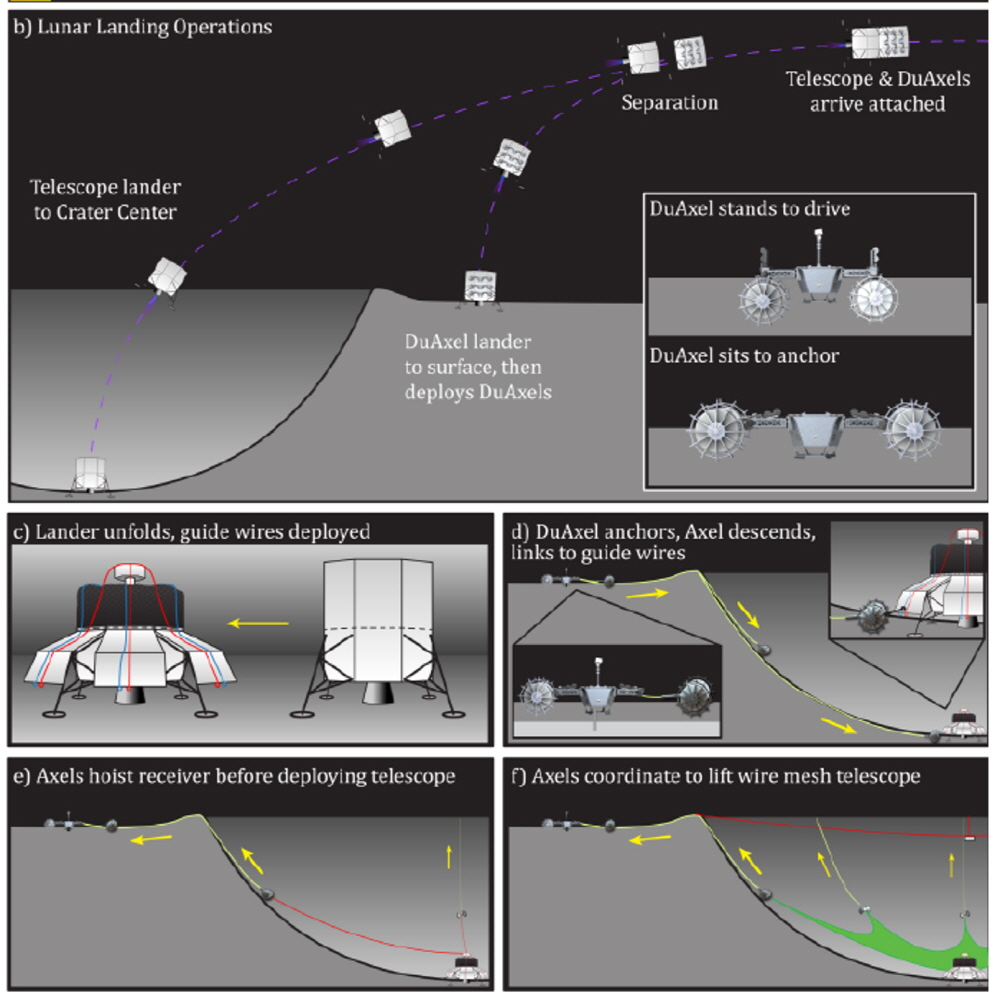
NASA has announced a project to turn the crater behind the moon into a radio telescope. When completed, it is expected to become the solar system’s largest radio telescope capable of detecting waves and frequencies that are not found on Earth.
If a radio telescope is installed on the moon, it is possible to measure wavelengths and frequencies that cannot be found on the earth because there is no interference such as the earth’s thick ionosphere and various radio noises on the earth. The LCRT (Lunar Crater Radio Telescope) project announced by NASA on March 8, 2020 is to use the lunar crater shape as a satellite antenna to make the crater itself a radio telescope.
In this plan, first, a crater with a shape and size suitable for a satellite antenna is removed from the back of the moon. The crater size is between 3km and 5km in diameter. The reason for choosing a crater on the back of the moon is that there is a problem that electromagnetic waves emitted from the Earth interfere with the crater that faces the Earth.

Then, an unmanned lander with receivers that amplifies and detects radio waves is sent to the center of the crater. A lander with multiple DuAxels is sent to the outer edge of the crater. The unmanned lander automatically expands the parts that become the LCRT material, and the outer edge lander extends the rover (DuAxel) and moves the outer edge to the appropriate position respectively. The four rovers fix themselves on the outer edge and send a hoist to the center of the crater to connect the carrier and lander with wires.
The hoist pulls the wire out of the center lander, causing the receiver to hang in the air. Now, a network with a receiver in the center of the crater and a satellite antenna is built around it. The completed LCRT has a receiver hanging at the center of the wire, and the diameter of the parabolic antenna is 1 to 5 km.
The LCRT is expected to be at least 1 km in diameter. Considering that the FAST, the largest radio telescope on Earth, has a diameter of 500m, the LCRT will become the largest radio telescope in the solar system.
There are many orbiting satellites in Earth’s orbit, and receiving signals from space is becoming increasingly difficult. LCRT is expected to bring new advances in space research as it can receive even low-frequency signals that cannot be received on Earth at 6~30MHz.
According to reports, NASA has set a nine-month deadline with a $125,000 development fund to see if the plan is feasible. In addition, technically, a project to install radio telescopes on the moon is already underway. NCLE, a project that receives low-frequency signals by linking a small low-frequency spectrometer installed on the Chinese lunar probe Changeo 4 and a lunar orbital low-frequency probe, began on May 25, 2018. Related information can be found here .


















Add comment